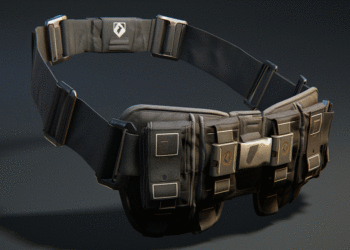E-bikes are changing the face of transportation across the country and worldwide, but there’s still some confusion about what they are and how they work. In this article, we’ll look at the technology behind e-bikes, helping you get up to speed on what they can do to help you get around town and why more people are choosing them over traditional bikes every day. We’ll also talk about how an e-bike might work in your area and provide tips on how to find the right one for you.
1. Pedal Assist
One of the main features of electric bikes is throttle assist, which gives you a boost of power when you need it most. Here’s how it works: When you pedal, a sensor detects how much effort you’re putting in and sends a corresponding signal to the motor. The motor then kicks in and provides power based on the effort you’re putting in, up to a maximum of 20 miles per hour for class 1 bikes.
That makes it easier to ride up hills and get around town without a sweat. You still have to do the work yourself, but with the extra push from an electric motor. The technology is handy, especially when going uphill or experiencing a drag force from headwinds. Pedal-assist mode requires effort because the power will be proportional to how much effort you put into your pedals. However, with minimal effort, you can get a significant power boost and make things much easier for yourself.
2. Throttle Assist
Throttle mode does not require you to use your pedals; turn the throttle, press a button for speed control and enjoy the ride! With this mode, the bike gets its power directly from the battery and doesn’t need any input. The throttle mode is handy, for example, when you want to relax, roll down and enjoy the scenery, say an ocean front, or it’s too hot out to pedal.
These electrically assisted cycles help you stroll around without making pedalling necessary. It is also beneficial if you are tired after a long day of work or commuting and don’t have the energy to put in some effort. In addition, some people can’t ride bikes due to disability but can still enjoy riding an e-bike as they do not require pedalling.
3. Hub Motors
Most e-bikes have hub motors located in the centre of the wheel. Hub motors are easy to maintain and less likely to break down than other motors. Plus, they provide good traction and control in all weather conditions. There are two types of hub motors: geared and direct drive. Geared hubs use gears to get power from the motor to the wheel, so it is more difficult for them to go as fast as direct drive hubs. Direct drive hubs don’t use gears but require a battery mounted near the rear axle. The hub motors help with riding up hills or over rough terrain because the bike will be easier to pedal with a lower gear ratio.
You can adjust how much power your bike gets by changing how much pressure you put on the pedals, using your hands or knees. However, most hub motors can only reach speeds of around 20 miles per hour. That’s why most bikes with hub motors also have a throttle option, allowing you to turn on an electric motor anytime, no matter your speed.
4. Degenerative Braking System (RBS)
A regenerative braking system (RBS) is a type of brake that captures energy from the bike as it slows down and transfers that energy back into the battery. That helps extend the bike’s range and makes for a more efficient ride, and you will find RBS systems on pedal-assist and throttle-on e-bikes. The RBS system setup comes in different configurations. In one design, the motor constantly receives power, but when you use your brakes, the system diverts all power to the brakes.
As you apply pressure, sensors detect this and send an electronic signal telling the motor controller to reduce power output. When you let off your brakes or release pressure, the RBS starts delivering the power back through the pedals so you can keep riding without interruption. Hence, the sensors help you get a braking boost when you want it while also maximizing your pedalling potential at other times.
5. Integrated Lights
Most e-bikes have integrated lights, which are great for safety and convenience. Here’s a quick rundown of how they work. First, a sensor detects when it’s getting dark outside. Then, the lights automatically turn on. The battery that powers the lights is usually in the headlight, which makes it easy to recharge. Some e-bikes also have a brake light, which turns on when you slow down or stop.
However, it’s crucial to ensure you take care of your charging needs by following these tips;
- Choose a charger suited for your specific needs (e.g., a level 1 charger if you’re commuting).
- Charge your bike every time before use (it’s like starting your car every day).
- It’s crucial not to leave the charger plugged in longer than necessary because it could overheat and damage the battery pack.
6. Advanced Lithium Battery Technology
One of the most significant technological advances in e-bikes is the battery. Lithium batteries are much lighter than traditional lead-acid batteries, making them ideal for electric bicycles. They also last longer, and you can charge them more quickly. Most importantly, they are much more powerful, meaning that e-bikes can now travel much farther and faster than ever before. With a lithium battery and motor, it’s possible to hit speeds up to 45 miles per hour without a sweat.
The batteries can supply more power thanks to improved electronic controllers, which regulate the flow of electricity from the battery and convert it into energy that drives the motor. These improvements mean an e-bike rider doesn’t have to exert as much physical effort as a regular bike or another non-electric vehicle because it handles hills easily.
7. Built-In Computers
Most e-bikes have built-in computers that track your riding data, including speed, distance, and calories burned. Some models also have GPS capabilities, so you can track your rides and map out new routes. You can usually view this data on a display panel on the handlebars. These displays are often customizable, too, so you can add or remove information as needed.
E-bikes may even include computer-generated maps of your ride to help guide you along the way. The intelligent technology behind e-bikes has made them one of the most popular choices for transportation. If you’re looking for an eco-friendly way to get around town, give an electric bike a try!
Takeaway
E-bikes are a great way to get around, and a lot of technology makes them work. Understanding how e-bikes work can help you choose the right bike for your needs and avoid pitfalls like buying an illegal e-bike or a substandard product. It also gives you a sense of what goes into their design and how they work. Hence, it’s crucial to identify a reliable bike store and brand to help you find the best possible e-bike for your needs.
David Prior
David Prior is the editor of Today News, responsible for the overall editorial strategy. He is an NCTJ-qualified journalist with over 20 years’ experience, and is also editor of the award-winning hyperlocal news title Altrincham Today. His LinkedIn profile is here.













































































